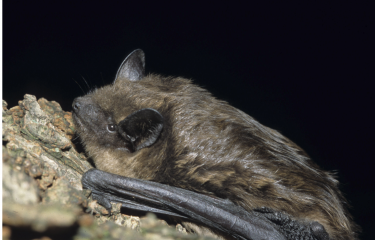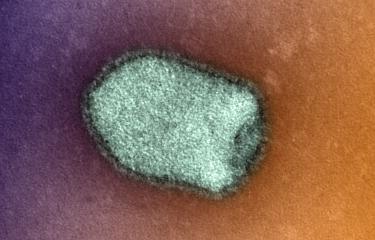Researchers at the Institut Pasteur and the French National Center for Scientific Research (CNRS) have just discovered that the rabies virus expresses in one of its proteins a key region which enables the human neurons that it infects to survive, and this is an essential condition for the virus to spread in the organism. By identifying the mechanisms which regulate whether the neuron survives or is destroyed, this research could pave the way for therapeutic possibilities, which could be used for treating neurodegenerative diseases or other pathologies.
Press release
Paris, january 19, 2010
Researchers at the Institut Pasteur and the CNRS within the Viral Neuro-Immunology Unit, directed by Monique Lafon, and the Nuclear Magnetic Resonance Unit, directed by Muriel Delepierre, have just identified in the rabies virus envelope protein, called G protein, a key region that can cause the infected human neurons to survive or to be destroyed. The scientists have shown that this key region, made up of the protein’s very last amino acids, is a binding site that is necessary for these functions. This region has been shown to control the affinity of the G protein and the nature of the neuron proteins with which the viral protein interacts.
To continue its infectious cycle in the host’s nervous system, the rabies virus must ensure that the neurons it infects survive. Attenuated viral strains, such as those that were used in a vaccine to eradicate the wild rabies virus in France, are not able to do this, and are therefore made nonvirulent. To pinpoint the key region of the G protein that the virus needs to keep its target cells alive, the scientists used recombinant chimeric viruses which express hybrid G proteins from virulent and attenuated viral strains. They have therefore shown that only one mutation in this region is enough to alter the nature of the cellular partners and cause the infected neurons to be destroyed, therefore causing the rabies virus to lose its pathogenicity.
The researchers are now looking to understand the molecular signaling mechanisms involved in this and to identify the synthetic molecules – peptides from the G protein or molecules mimicking them – for therapeutic purposes. It might actually be possible to use the key part of the G protein, or the key part of a derived synthetic molecule that mimics it, to make the neuron survive or regenerate, or conversely to destroy tumor cells which multiply randomly. This work is still very much in its early stages but could pave the way for different therapeutic possibilities, particularly in terms of treatment for neurodegenerative diseases and cancer.
_______
This project received financial support from the French National Research Agency.
Picture : rabies virus. ( X 560000, colorized picture, Institut Pasteur).
Source
Attenuation of Rabies Virulence: Takeover by the Cytoplasmic Domain of its Envelope Protein, Science Signaling, online, January 19, 2009.
Christophe Préhaud (1,2,3,&), Nicolas Wolff (1,4,5), Elouan Terrien (1,4,5), Mireille Lafage (1,2,3), Françoise Mégret (1,2,3), Nicolas Babault (1,4,5), Florence Cordier (1,4,5), Gene S. Tan (6), Elodie Maitrepierre (1,4,5), Pauline Ménager (1,2,3), Damien Chopy (1,2,3), Sylviane Hoos (1,7,5), Patrick England (1,7,5), Muriel Delepierre (1,4,5), Matthias J. Schnell (6), Henri Buc (1), and Monique Lafon (1,2,3).
(1) Institut Pasteur, Paris, France
(2) Viral Neuro-Immunology Unit
(3) CNRS URA 3015
(4) Nuclear Magnetic Resonance of Biomolecules Unit
(5) CNRS URA 2185
(6) Departments of Microbiology and Immunology, and Jefferson Vaccine Centre, Thomas Jefferson University, Philadelphia, PA, USA
(7) Biophysics of Macromolecules and their Interactions (platform)
(&) 6 month leave at Thomas Jefferson University
Contact
Institut Pasteur Press Office
Nadine Peyrolo or Marion Doucet - +33 (0)1 45 68 89 28 - presse@pasteur.fr




